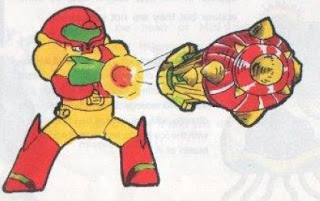The Evolution of Samus Aran
The article on game aesthetics brings up some interesting insight on how current technologies effect the development and final versions of so many games. I think that the Metroid series is a great example of such a trend, and like Zelda and Mario, has made the successful transition from 2D to 3D. The Metroid series had huge obstacles to overcome by moving into 3D without lo features like already difficult jumps and of course the morph ball. The 3D approach has been to use first-person shooter for the majority, and transitions to third-person for ball mode, Screw Attacking, and some puzzles. This offers a great dynamic in gameplay, although the game still "feels" predominately like a first-person shooter. The latest release in the series, coming out this summer is going to cross the classic 2D style into the new game engine, and looks awesome. I think I might be getting a Wii!

Metroid(1986, NES)
Metroid II: Return of Samus(1991, Gameboy)
Super Metroid(1994, SNES)
Metroid Prime(2002, Gamecube)
Metroid: Other M(2010, Wii)
Samus Aran from original NES game's instruction manual...
Samus aquiring the Screw Attack in the NES classic.

The newer rendition of Samus from Metroid II: Return of Samus(still essetially the same up till today!)

A nice 3D Samus from Metroid Prime.
A screen shot from the new game coming out this summer, Metroid: Other M
And the trailer...
Comments
As time moved on, they emphasized those features and started showing more aspects about the character, till he is what we see him of today. So what began as constraints due to the processing power of the computers, are now converted to distinguish who the character is and what he looks like.
As time moved on, they emphasized those features and started showing more aspects about the character, till he is what we see him of today. So what began as constraints due to the processing power of the computers, are now converted to distinguish who the character is and what he looks like.